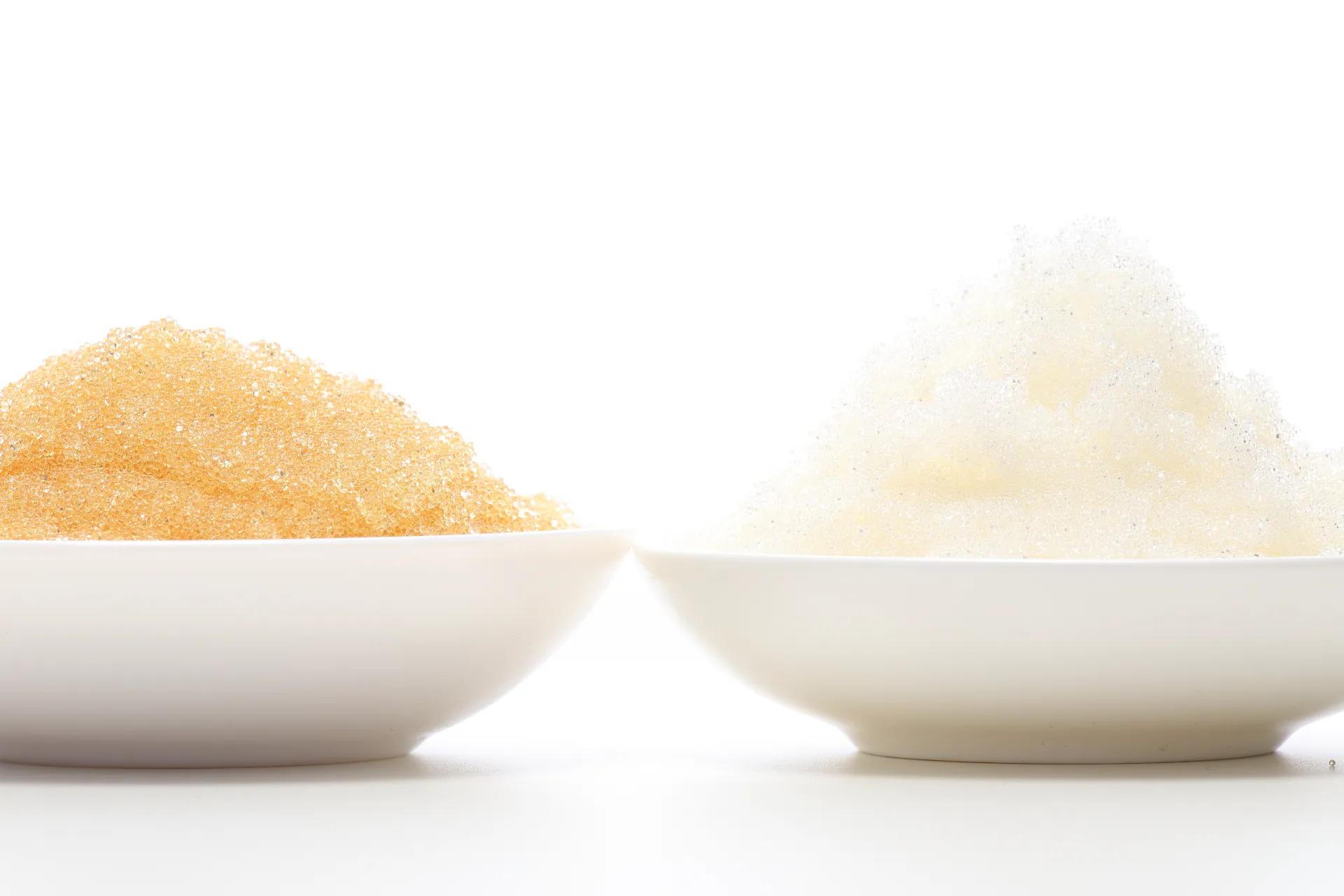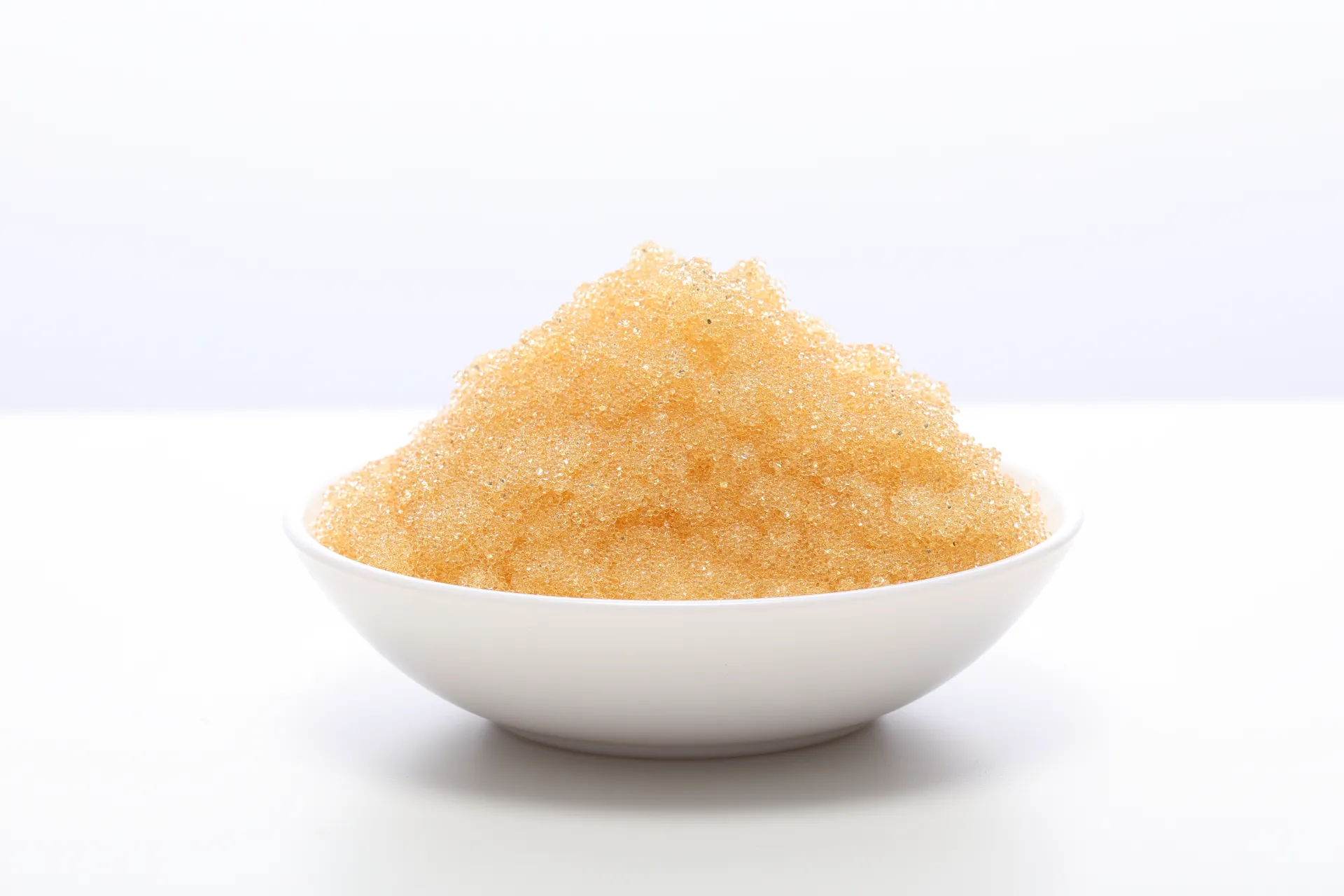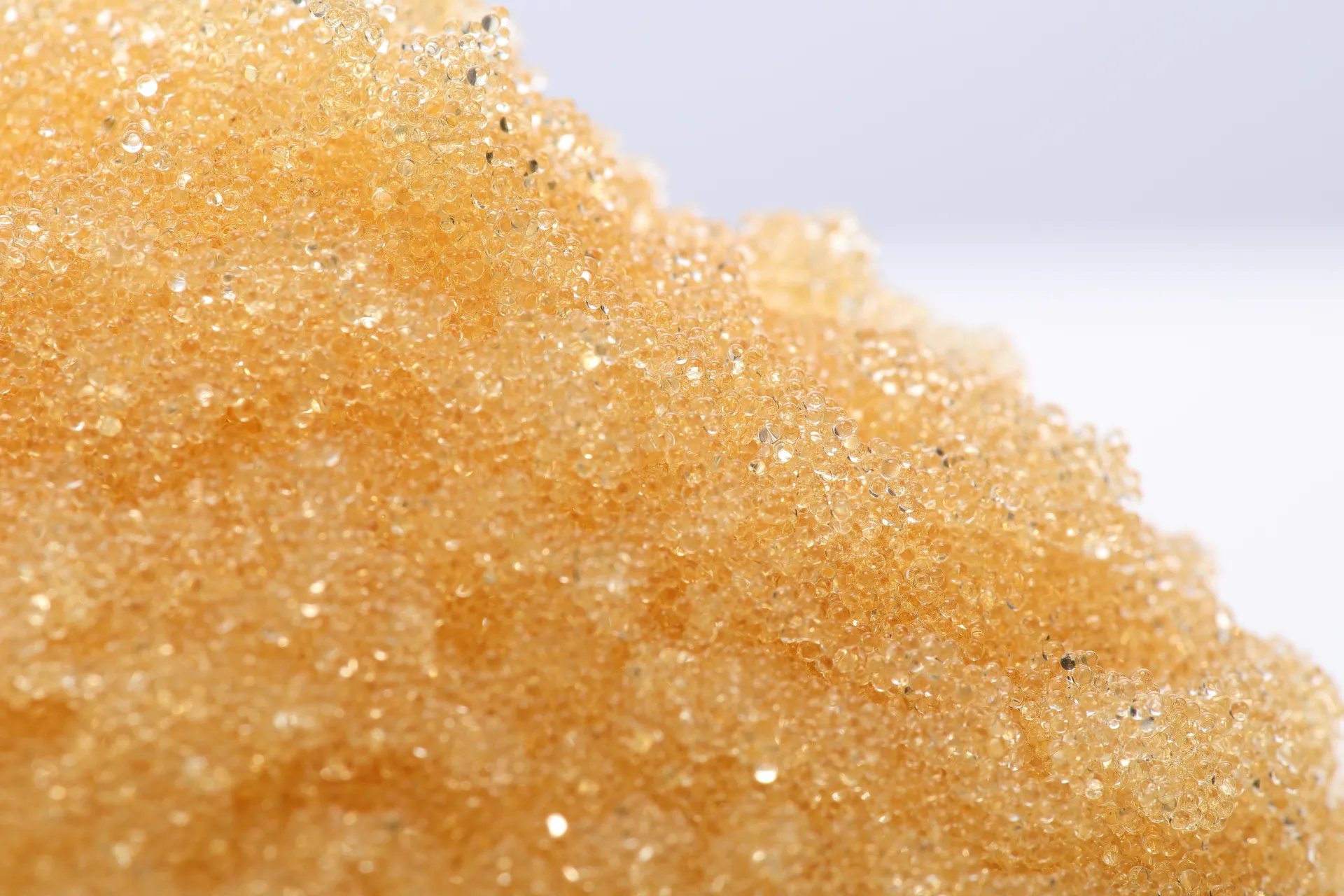









The global demand for high-purity water and efficient separation technologies continues to escalate, driven by stringent environmental regulations and the need for optimized industrial processes. At the forefront of this technological advancement is the ion exchange resin, a versatile polymer material indispensable across diverse sectors. These sophisticated resins facilitate the removal of undesirable ions from solutions, offering unparalleled precision in water treatment, chemical processing, pharmaceuticals, and beyond. As industries strive for greater sustainability and operational efficiency, the role of ion exchange technology becomes ever more critical, shaping cleaner production cycles and resource recovery initiatives. The market for these resins is currently experiencing robust growth, fueled by innovations in resin chemistry and expanding applications, particularly in wastewater treatment and the recovery of valuable metals from industrial effluents.
Recent industry trends highlight a significant shift towards more selective and durable resins, capable of operating under challenging conditions, including high temperatures and aggressive chemical environments. Furthermore, there is an increasing emphasis on resins designed for specific applications, such as the removal of per- and polyfluoroalkyl substances (PFAS) or the selective extraction of lithium from brines. This specialization ensures optimal performance and cost-effectiveness for end-users, reflecting a mature market that continuously adapts to emerging industrial requirements. Companies that invest in advanced research and development, focusing on novel polymeric structures and functional groups, are poised to lead this evolving landscape, offering solutions that meet both performance demands and environmental imperatives.
The production of high-quality ion exchange resin involves a precise and multi-stage chemical manufacturing process, starting with the polymerization of monomer precursors. Typically, styrene and divinylbenzene are reacted to form spherical beads of a cross-linked polystyrene matrix. Divinylbenzene acts as the cross-linking agent, determining the resin's physical stability and pore structure, which significantly influences its kinetic properties and resistance to osmotic shock. This initial polymerization step is critical, as it defines the base material's mechanical strength and overall uniformity, which are essential for long-term operational integrity in industrial applications.

Following the formation of the polymer beads, the next crucial step is functionalization, where specific chemical groups are introduced onto the polymer matrix. For instance, in the case of a cation exchange resin like the Strong Acid Cation Exchange Resin 001X7 H MB, sulfonic acid groups are typically grafted onto the polystyrene backbone through a sulfonation process. This step imparts the resin's ion exchange capability, allowing it to selectively bind and release cations. Conversely, for an anion exchange resin, quaternary ammonium groups are introduced. Strict quality control, adhering to international standards such as ISO 9001 and ANSI/AWWA B604, is maintained throughout production, ensuring consistent particle size distribution, total exchange capacity, and mechanical stability. This rigorous approach guarantees a product life span of 5-10 years or even longer under optimal operating conditions, proving ideal for demanding industries like petrochemicals, metallurgy, and municipal water treatment, where efficiency and corrosion prevention are paramount.
The effectiveness of an ion exchange resin is primarily determined by its technical specifications. Our Strong Acid Cation Exchange Resin 001X7 H MB, a premium grade product, is engineered for optimal performance in applications requiring complete demineralization or softening. Its robust polystyrene-divinylbenzene gel-type matrix ensures excellent chemical and physical stability, allowing for long operational cycles and efficient regeneration. The resin's high total exchange capacity enables the efficient removal of hardness ions (e.g., calcium, magnesium) and other cations, making it an ideal choice for boiler feed water treatment, industrial process water purification, and various chemical processing applications.
| Parameter | Value/Description |
|---|---|
| Product Name | Strong Acid Cation Exchange Resin 001X7 H MB |
| Polymer Matrix Structure | Polystyrene-divinylbenzene, Gel Type |
| Functional Group | Sulfonic Acid |
| Ionic Form (as shipped) | H+ Form |
| Total Exchange Capacity | ≥2.0 eq/L (min. 1.2 eq/L for working capacity) |
| Moisture Retention | 45-50% |
| Particle Size Range | 0.315 - 1.250 mm (95% min.) |
| Uniformity Coefficient | ≤1.6 |
| Reversible Swelling (Na+ to H+) | 5-8% max |
| Specific Gravity | 1.26-1.29 g/mL |
| Shipping Weight | 800-840 g/L (as H+ form) |
| pH Range | 0-14 |
| Max Operating Temperature | 120°C (248°F) |
The detailed parameters above underscore the engineering precision of this specific ion exchange resin, ensuring its reliability and performance in demanding industrial settings. For instance, its high uniformity coefficient indicates a narrow bead size distribution, which translates to lower pressure drop and more efficient flow dynamics within the resin bed, thereby extending the operational cycle and reducing energy consumption. Adherence to these strict specifications is what sets apart high-performance resins from standard alternatives, providing significant long-term value in terms of water quality, system protection, and overall operational expenditure.
The versatility of ion exchange resin extends to a myriad of industrial and commercial applications, where precision and efficiency are paramount. In power generation, these resins are vital for producing ultrapure boiler feed water, preventing scale formation and corrosion in turbines and boilers, which significantly enhances energy efficiency and extends equipment lifespan. The stringent quality requirements in the pharmaceutical and food and beverage industries for deionized water are met by advanced ion exchange resin systems, ensuring product safety and quality. Furthermore, in hydrometallurgy, ion exchange is crucial for the selective recovery of precious and base metals from leach solutions, offering an environmentally sound and economically viable alternative to traditional methods.

Beyond these, ion exchange resin plays a critical role in environmental protection through wastewater treatment, removing pollutants such as heavy metals, nitrates, and phosphates before discharge. This not only complies with increasingly strict environmental regulations but also contributes to water reuse initiatives, mitigating water scarcity. Compared to alternative methods like reverse osmosis or distillation, ion exchange often presents advantages in terms of lower capital expenditure for specific contaminant removal, higher selectivity, and simpler operation for certain applications. Its ability to be regenerated repeatedly further enhances its cost-effectiveness and reduces waste generation over its operational life, embodying a sustainable approach to industrial purification challenges.
The market offers a range of ion exchange resin types, each tailored for specific applications. Strong acid cation exchange resin (SAC) and strong base anion exchange resin (SBA) are among the most common, used extensively for complete demineralization. Weak acid cation (WAC) and weak base anion (WBA) resins offer higher regeneration efficiency but are limited to specific pH ranges and contaminant types. Additionally, specialized resins such as chelating resins are designed for selective heavy metal removal, while inert resins are used for bed support. Understanding the nuances of each type is crucial for optimal system design.
| Resin Type | Functional Group | Typical Applications | Regenerant |
|---|---|---|---|
| Strong Acid Cation (SAC) | Sulfonic Acid | Softening, Demineralization, Heavy Metal Removal | Acid (HCl, H2SO4) |
| Weak Acid Cation (WAC) | Carboxylic Acid | Bicarbonate alkalinity removal, Softening, pH adjustment | Acid (Lower chemical consumption) |
| Strong Base Anion (SBA) | Quaternary Ammonium | Demineralization, Silica removal, CO2 removal | Caustic (NaOH) |
| Weak Base Anion (WBA) | Primary, Secondary, Tertiary Amines | Acid removal (strong acids), Organic removal | Caustic (Lower chemical consumption) |
While many manufacturers, including prominent names like Dowex exchange resin, produce high-quality products, direct comparisons should always focus on specific resin grades and their performance under various conditions rather than brand names alone. Factors like bead uniformity, osmotic stability, exchange capacity, and kinetic performance are more indicative of a resin's suitability for a given application. Our commitment lies in providing transparent data and expert consultation, ensuring clients select the most efficient and cost-effective ion exchange resin solution, regardless of brand, tailored to their unique operational demands and environmental targets. We leverage over two decades of experience in the industry to guide our clients towards optimal selections.
Recognizing that every industrial process presents unique challenges, we specialize in delivering customized ion exchange resin solutions. This involves a comprehensive analysis of the client's influent water characteristics, desired effluent quality, operational parameters, and economic considerations. Our technical team works closely with clients to design bespoke resin systems, which may include specific resin blends, optimized regeneration protocols, or innovative system configurations (e.g., layered beds, counter-current regeneration) to maximize efficiency and minimize chemical consumption and waste. This consultative approach ensures that the selected ion exchange resin system is not just a product, but a highly optimized solution delivering tangible benefits.

A notable case involved a large-scale petrochemical complex struggling with high levels of total dissolved solids (TDS) in its process water, leading to frequent boiler scaling and increased maintenance costs. By implementing a customized multi-bed ion exchange resin system featuring our Strong Acid Cation Exchange Resin 001X7 H MB in tandem with a strong base anion resin, the plant achieved a consistent effluent quality with TDS levels reduced by over 98%, significantly minimizing scale formation and extending boiler operational cycles by 40%. This not only led to a substantial reduction in chemical consumption for boiler descaling but also a 15% energy saving due to improved heat transfer efficiency. Client feedback consistently highlights our proactive technical support and the long-term reliability of our resin products.
We understand the critical importance of timely delivery for maintaining uninterrupted industrial operations. Our robust supply chain and logistics network enable us to offer reliable delivery schedules for our ion exchange resin products, typically ranging from 7-14 business days for standard orders, with expedited options available upon request. Each batch undergoes rigorous quality control and is packaged securely to ensure product integrity upon arrival.
All our ion exchange resin products, including the Strong Acid Cation Exchange Resin 001X7 H MB, are backed by a standard 12-month limited warranty from the date of shipment, covering manufacturing defects and material integrity under normal operating conditions. Our commitment to quality is reinforced by our ISO 9001:2015 certification, guaranteeing consistency and adherence to the highest international standards. Should any issues arise, our dedicated technical support team is available to provide expert guidance and troubleshooting, ensuring optimal performance and maximizing your investment in our advanced ion exchange resin solutions.